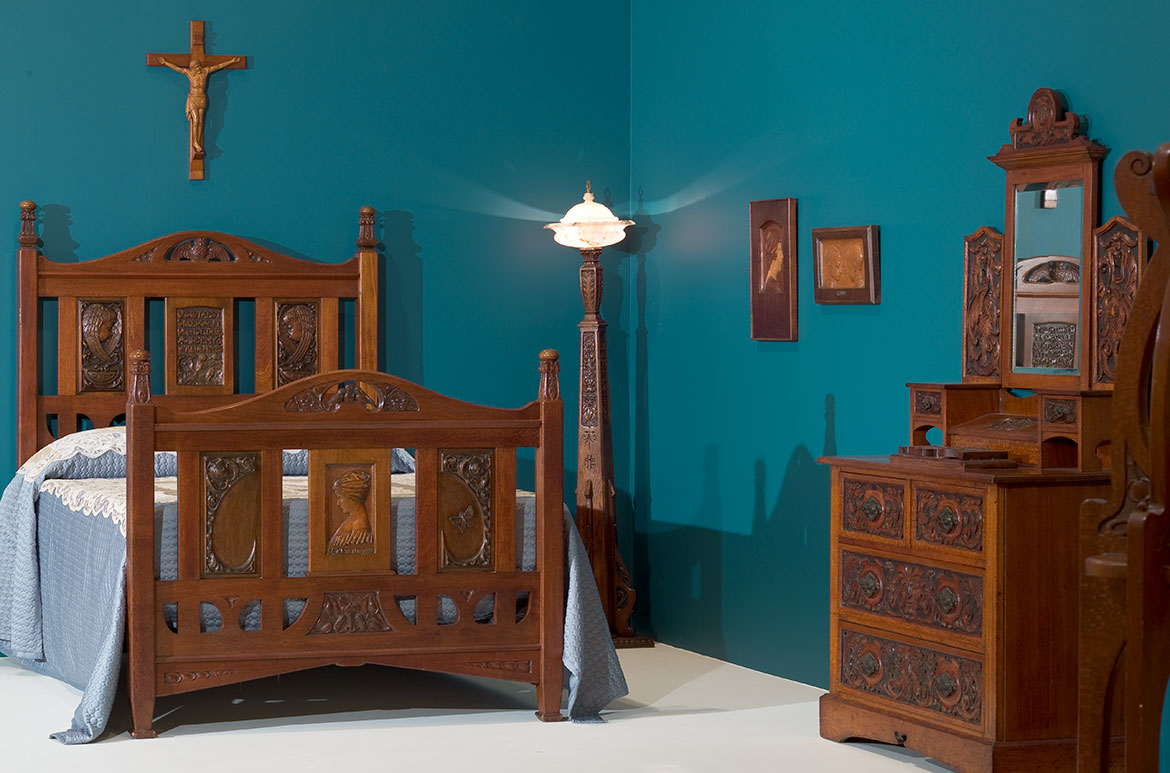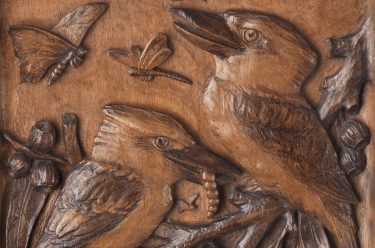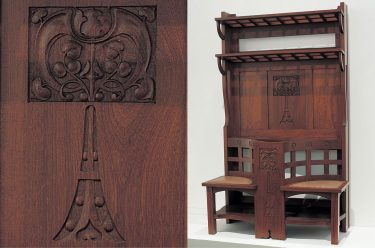On the occasion of World Sleep Day we take the opportunity to highlight this major work by Lewis Jarvis (LJ) Harvey — carved from Silky Oak with inset panels in Queensland Beech — the Bed of Peace was made for Elsie Harvey [Noble] (1898-1986), the eldest of Harvey’s four children in 1919. It is probably the most significant example of symbolist furniture in Australia.
RELATED: LJ Harvey and his school
In 1918, Harvey began making the bed as a special 21st birthday present for Elsie as she celebrated her birthday three months after the Treaty of Versailles was signed on 28 June 1919, concluding World War One. Harvey commemorated this moment by incising the date and the word ‘PEACE’, together with his signature, on the back of the headboard, thus linking peace with peaceful slumber.
LJ Harvey ‘Bed of Peace’ 1919
![LJ Harvey’s Bed of Peace 1919 with Fanny Ellen Harvey’s [nee Keal] Bedspread and bolster cover c.1920s](https://blog.qagoma.qld.gov.au/wp-content/media/web-BLOG_HARVEY-lj_bed-of-peace-installed2.jpg)
The quotation on the headboard, set between carved figures of sleeping and waking cherubim, is extracted from the second stanza of ‘To Sleep’ by the romantic English poet John Keats; the sonnet was written in April 1819, when Keats’s health was failing and he became aware of his own mortality. Lines 5-8 reads:
O soothest Sleep! If so please thee, close
In midst of this thine hymn my willing eyes,
Or wait the “Amen”, ere thy poppy throws
Around my bed its lulling charities.
The line introduced the poppy motif, an ancient symbol of sleep and death, which Harvey also portrays on the headboard. In the crest rail sits an owl, further representing night.

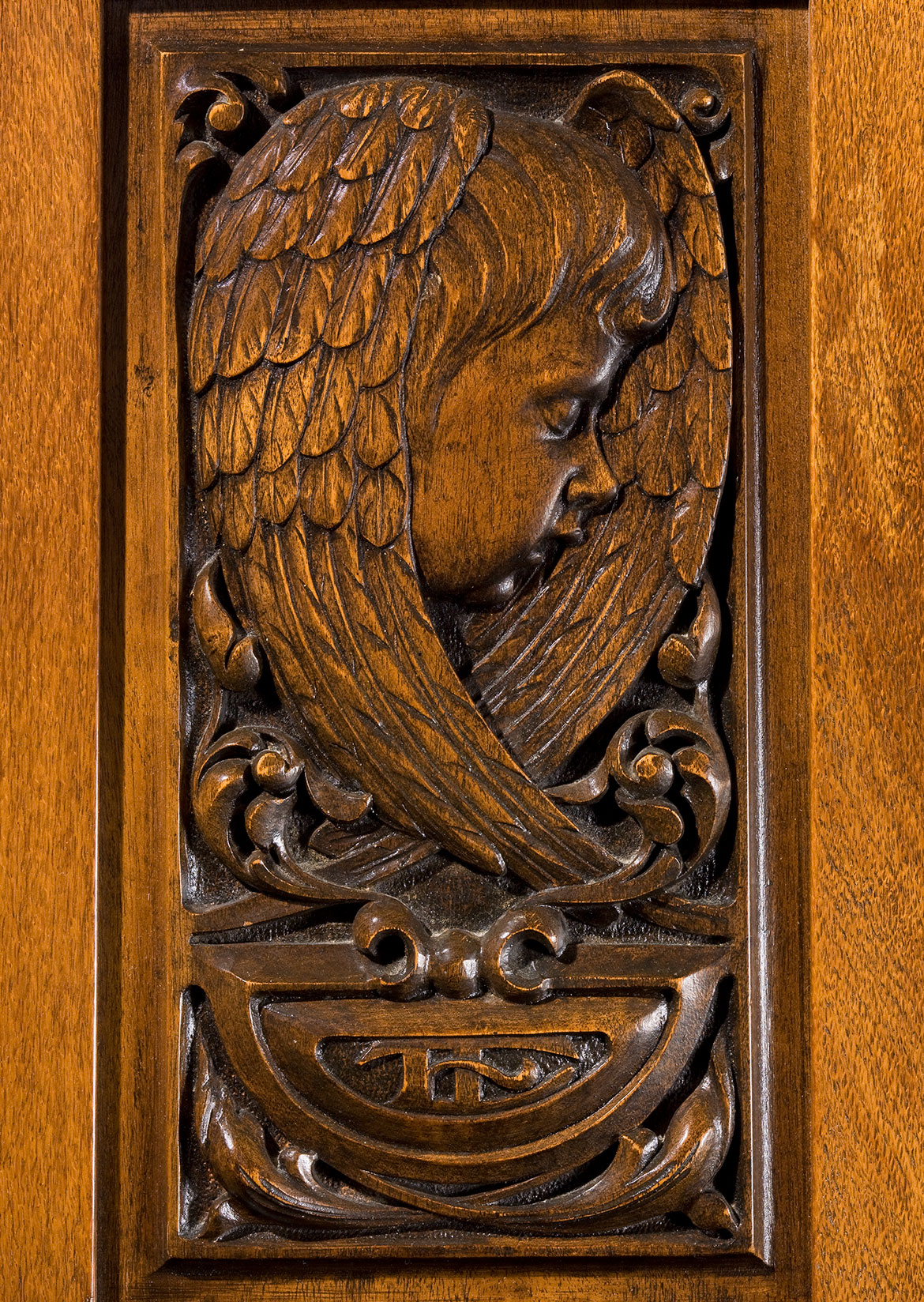
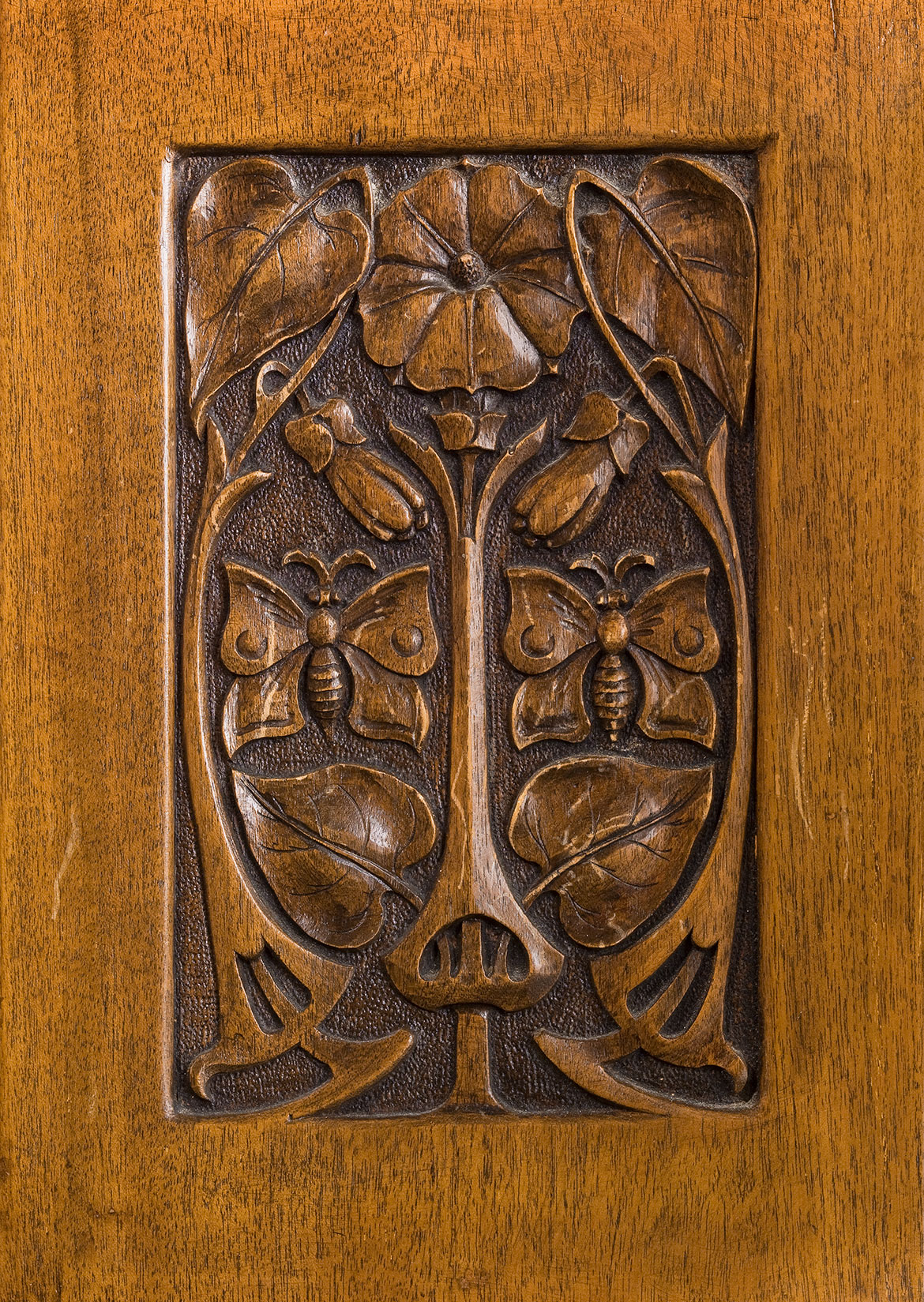
In contrast, the details on the foot of the bed reference morning and awakening. Harvey carved the central panel of the footboard, portraying Elsie as ‘The debutante’, awakening to the possibility of new life. Below is a panel embellished with morning glory, that most fragile and transient of flowers, and an equally transient butterfly. Surmounting the panel is a carving of bird in their nest, acknowledging the fact that Elsie would soon depart from the family home. Perhaps this gift could be seen as a replacement for the annual presentation of young women at debutante balls at a time when Brisbane’s and indeed Australia’s social niceties had been put on hold for the duration of the war.
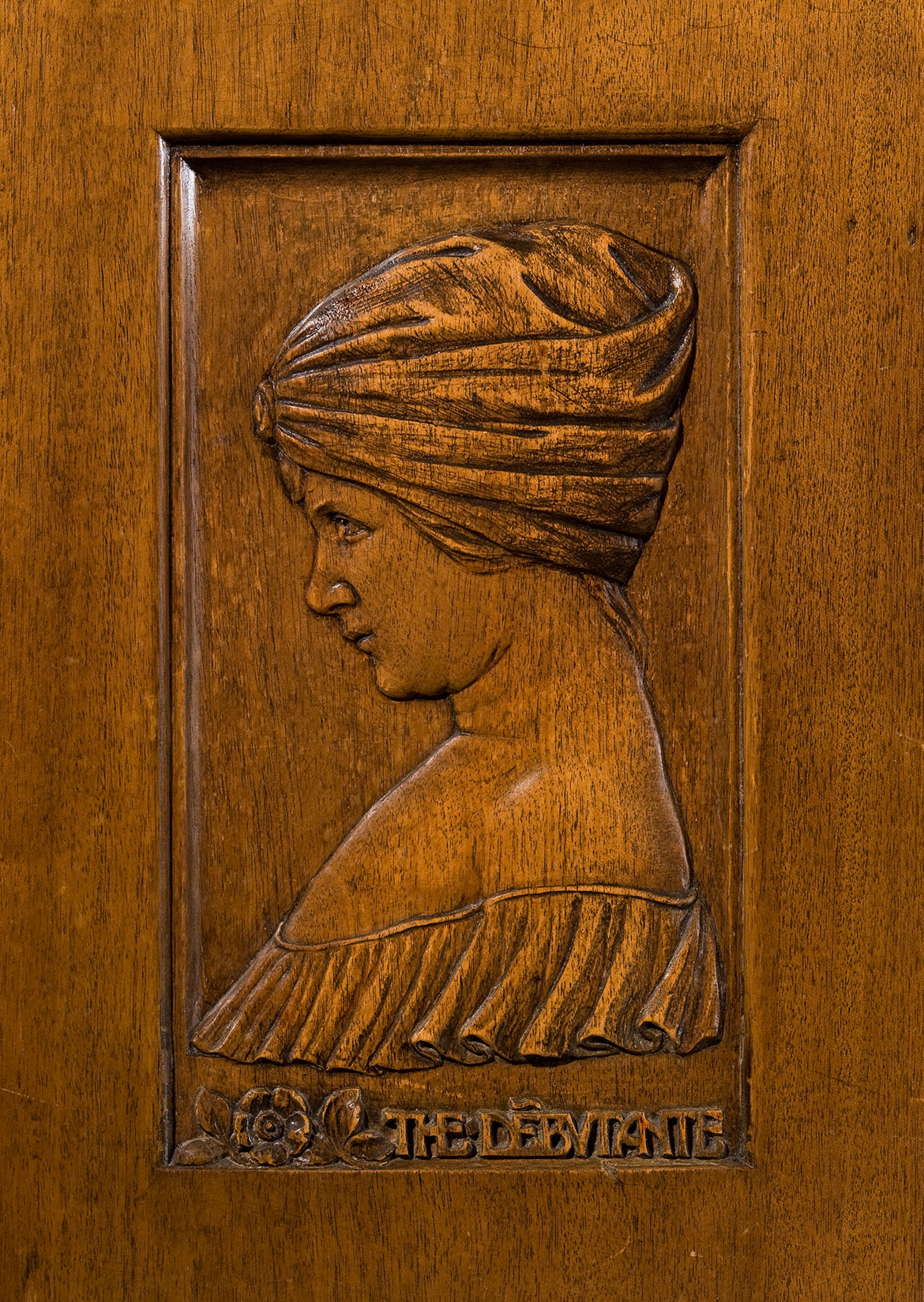
Harvey was the most important figure in the arts and craft movement in Queensland in the first half of the 20th century, born in England in 1871, he migrated with his family to Queensland in 1874. He was trained by English woodcarvers Edward G. Madley, Cuthbert Vickers and studied at the Brisbane Technical College under JA Clarke and subsequently R Godfrey Rivers. Harvey established a business as a wood and stone carver in 1892 and c.1897-99 transferred his business to 111 George Street, Brisbane until he took up a full time teaching appointment at the Central Technical College in 1916 where he taught woodcarving, modelling and pottery.
Edited extract by Glenn R Cooke, former Curator (Queensland Heritage), QAGOMA. Additional research and supplementary material by Elliott Murray, Senior Digital Marketing Officer, QAGOMA
LJ Harvey
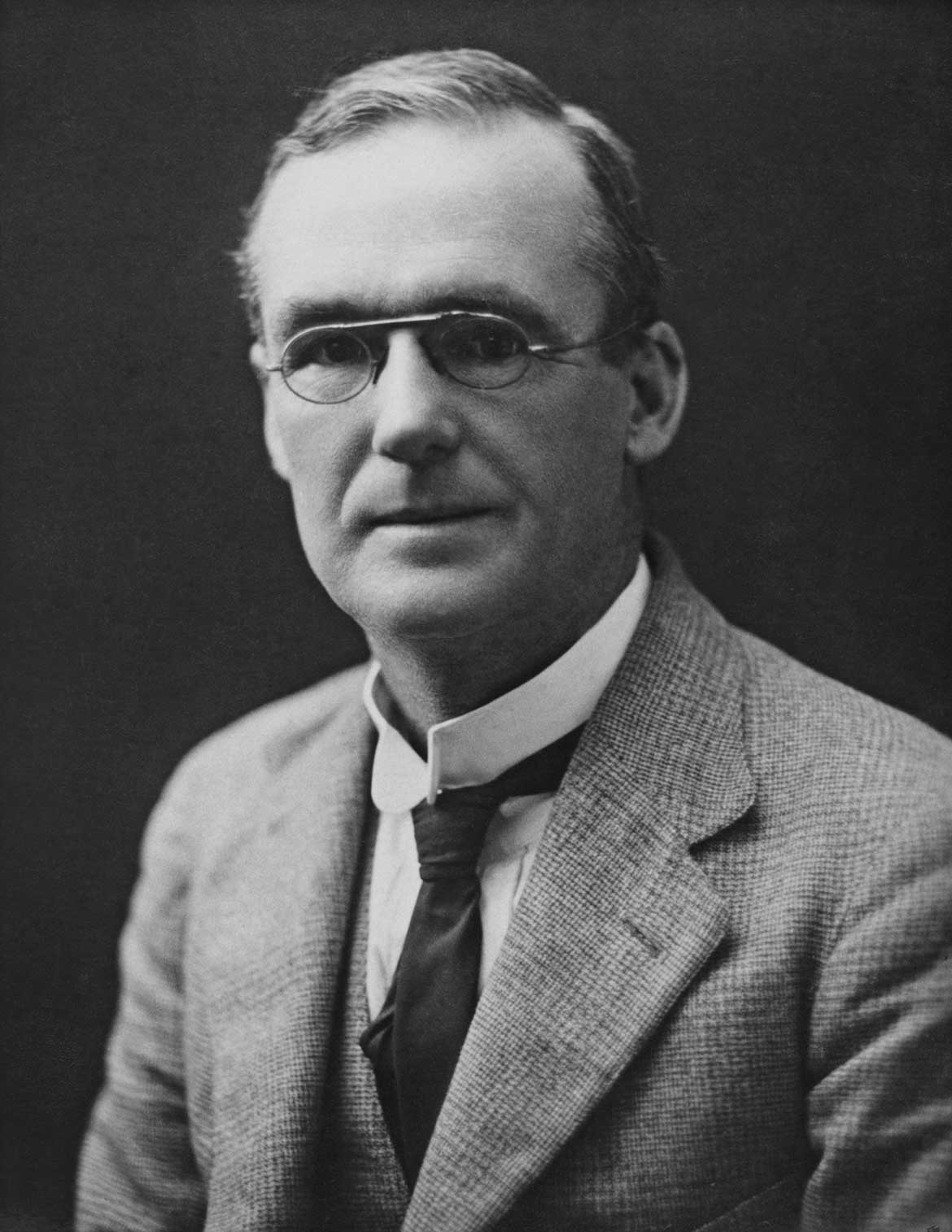
Delve into more works by LJ Harvey
Harvey produced several screens over his career but most were based on ‘nymph’ figures. Kookaburras were Harvey’s favourite bird (he used to feed and study them from the studio of his house in Hill End) and he modelled them frequently and used them on his ceramic pieces. The reverse side is a landscape depiction of Mt Tamborine — his favourite retreat to study nature.
LJ Harvey ‘(Screen with kookaburras and landscape)’ 1931
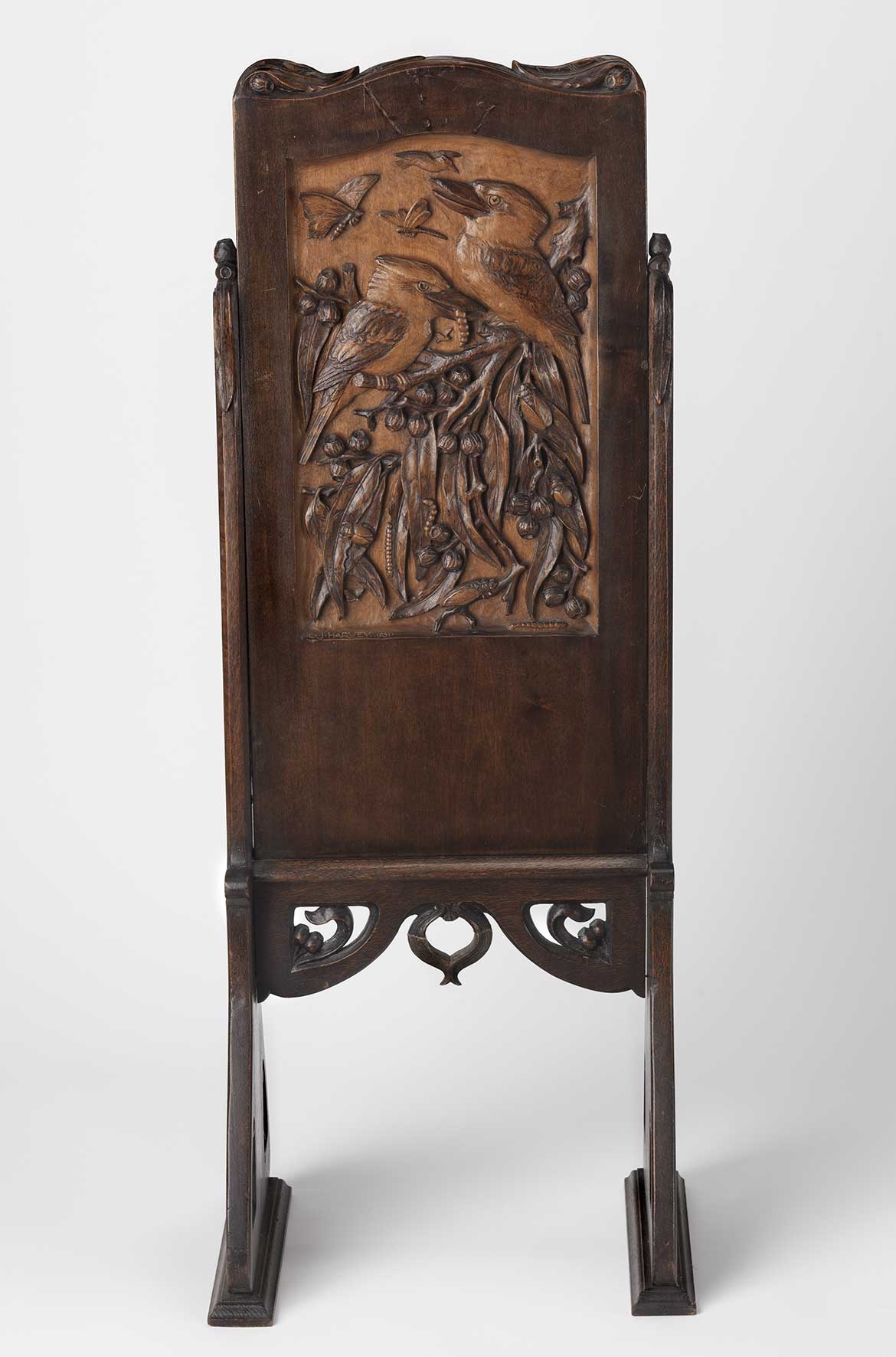
Carved from Queensland beech, this plaque is of Harvey’s twin grandsons, David and Bruce Noble — according to the Reverends Noble — the carving was originally intended to be a double portrait but their facial characteristics were changing, eventually Harvey deciding to make a generalised representation and call it ‘Pals’.
LJ Harvey ‘Plaque: Pals’ 1940
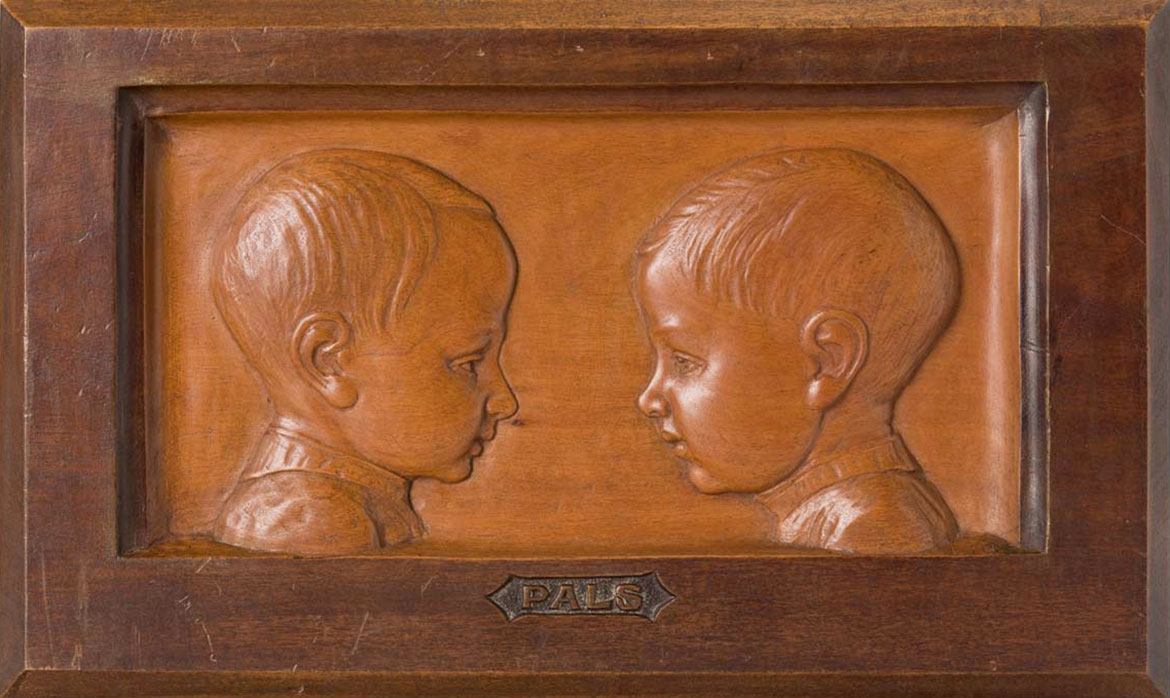
The Reverends [David and Bruce] Noble were bequeathed Bed of Peace among other works by their mother Elsie Harvey Noble. This collection travelled with her when she went to live with her sons in England and later to the United States. The Reverends Noble were enthusiastic supporters of the Queensland Art Gallery’s 1983 exhibition ‘LJ Harvey and His School’, which resulted in some of the finest examples of Harvey’s work in their collection being transferred to the Gallery at that time. They have continued to preserve and perpetuate the memory of their grandfather and have generously donated their remaining collection to the Queensland Art Gallery | Gallery of Modern Art through the Foundation.
Featured image: LJ Harvey, Australia 1871-1949 / Bed of Peace 1919 / Carved silky oak with inset panels in Queensland beech / Headboard: 160 x 139 x 6cm; footboard: 116 x 139 x 6cm / Gift of the Reverends David and Bruce Noble in memory of their mother Elsie Harvey Noble through the Queensland Art Gallery Foundation 2008 / Collection: Queensland Art Gallery | Gallery of Modern Art / Photograph: Ray Fulton © QAGOMA
#QAGOMA
